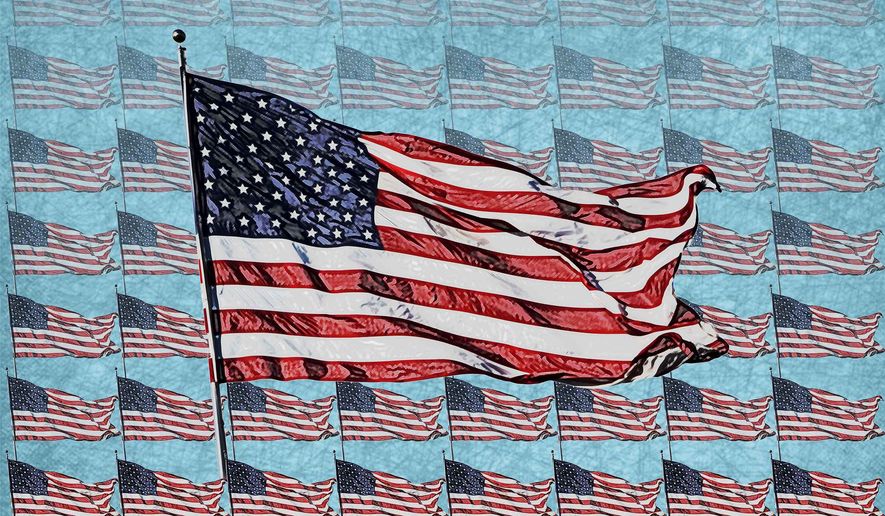OPINION:
Flag Day in 1916 in the nation’s capital was one of firsts and superlatives. Never before had Old Glory been raised to the top of the Washington Monument. But 11 sailors and an officer, manipulating a record length rope that had been spliced to reach the northeast corner of the windows at the top, achieved the feat. And never before, according to the Washington Herald, in an article entitled, “A City of a Million Flags,” have the citizenry “entered so thoroughly into the spirit of a celebration … .”
There were flags on homes, stores, cars, wagons, push carts, government buildings and coat lapels. Some were modest, costing may only a dime or 15 cents, No matter. “Everybody, male and female, young and old,” read the Herald, “bob-haired, gray-haired, and bald-headed,” had a flag.
The occasion for the revelry was the Preparedness Parade, organized to ensure that, in the event the nation would be drawn into the World War raging in Europe, Washington D.C. would be ready, unlike the situation in the War of 1812 when British troops wreaked havoc on the city. The parade along Pennsylvania Avenue would eventually end up on the Washington Monument grounds where President Woodrow Wilson, who would lead the marchers for a short time, would deliver the major address.
Although it was predicted that 60,000 would march — a record — the actual count from government reckoners was 86,391. And 300,000 lined the streets. To be sure, there were floats indicative of the city’s preparedness, but there were no uniforms and just a few marching bands. The parade was a solemn procession of most Washingtonians, who, if not on the street watching, marched in ordinary clothes.
“Never before,” according to the Herald, “was a more democratic body of men and women assembled in Washington. Physicians and machinists, lawyers and mechanics, actors and stage hands, architects and artists, all will rub shoulders in line.”
The day was miserably humid and hot over a clear blue sky, and the parade lasted more than six hours. Marchers included all types of government officials, except from Congress, with the lone representative, Sen. Morris Sheppard, a Texas Democrat, along with 175 Senate staffers.
The Washington Monument ceremony of raising the flag to the top brought enormous crowds, but it was President Wilson’s speech that drew special coverage because his renomination was voted on the same day at the Democratic National Convention in St. Louis. So political nuances that might give insight to Wilson’s targeting the already chosen Republican nominee, Charles Evans Hughes, (who opted out of the D.C. event) were scrutinized.
And the address essentially dealt with Americans who might not be loyal to the United States in a war-torn situation:
“I want to be scrupulously just, my fellow citizens, in assessing the circumstances of this day,” said Wilson. “I believe that the vast majority of those whose lineage is directly derived from the nations now at war are just as loyal to the flag of the United States, as any native citizen of this beloved land, but there are some men of that extraction who are not, and they … are doing their best to undermine the influence of the government of the United States.”
Wilson went on: “There is disloyalty active in the United States, and it must be absolutely crushed . … [For] loyalty to the flag is the first test of tolerance in the United States.”
For the Herald, however, the day was not about commentary but about the fact that Flag Day was, indeed, special and that tomorrow would herald the capital city’s “prosaic, shaded self, with its clerks, its merchants, and its statesmen going about their several ways just as they have done for so many yesterdays, and will continue to do for so many tomorrows.”
• Thomas V. DiBacco is professor emeritus at American University.




Please read our comment policy before commenting.